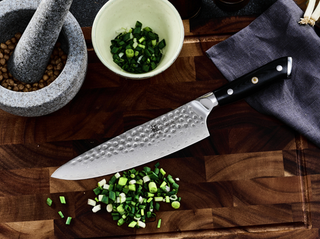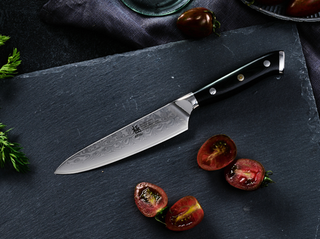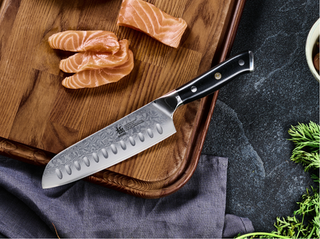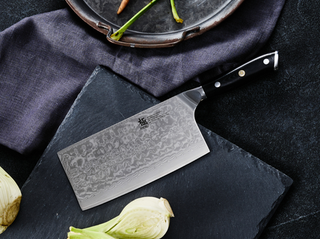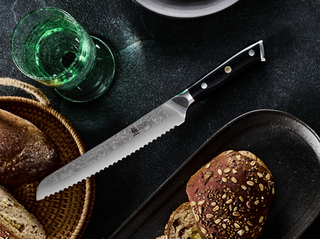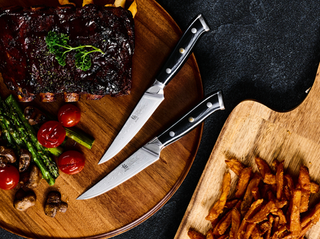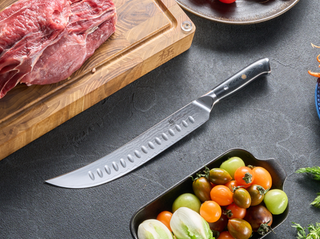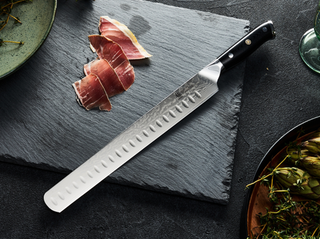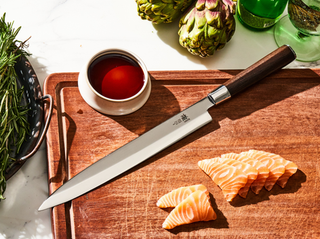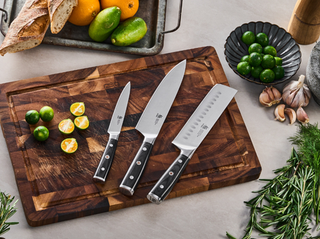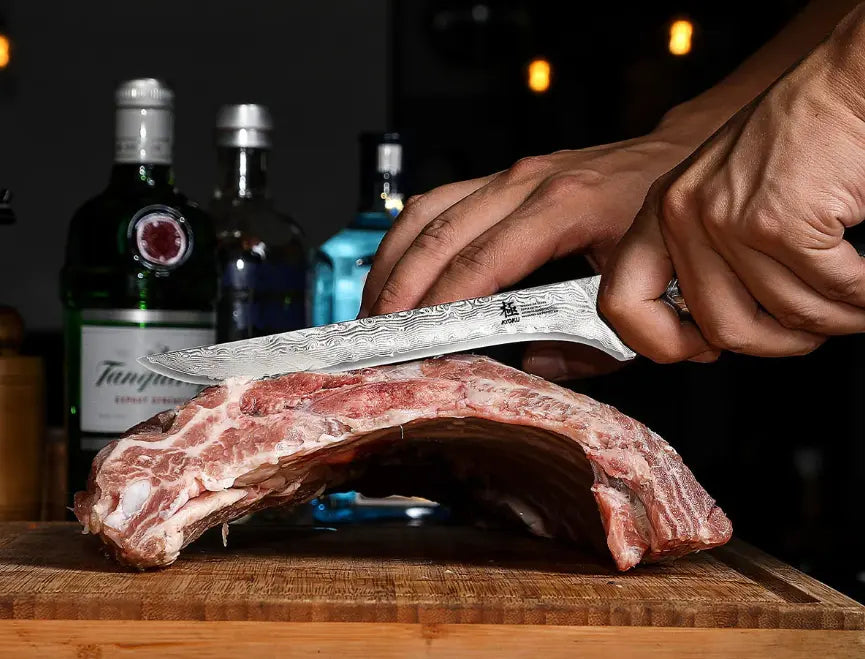Think back to iconic moments from Samurai Jack, where a blade effortlessly slices through anything in its path—that's the precision you can expect from Japanese knives. Known for their razor-sharp edges, exceptional craftsmanship, and versatile designs, Japanese knives are favored by chefs and home cooks worldwide. Discover why these knives are globally preferred and what makes them truly unique.
Here’s What Makes Japan Famous for Knives
Japanese knives are in high demand due to the high-quality materials used to make them and are known to be used in unique ways by Japanese people. Most Westerners see knives as cutting instruments, while Japanese cooks see them as extensions of their hands. They use these knives like they would use their fingers, allowing them to cut and slice with greater precision than any other tool.
Japanese knives are crafted in traditional ways, and they have been making them for years. This allows accuracy and refinement by utilizing the best quality steels available, polishing them, and then giving the finishing touches. These high-tech alloyed steels are not found in store-bought knives.
Here are some other explanations to understand what makes Japan famous for knives.
Black finishing
The Japanese knife has been regarded as one of the most desirable knives in the world, and for good reason: they are known for their extraordinary sharpness, durability, and balance. But what makes these knives so unique? The answer is straightforward: it's all about the finish.
Product. Japanese knives are typically finished with the help of a blacksmith, also known as kuro-uchi. This finish gives them a classic, rustic appearance while also decreasing the danger of corrosion and preventing food from adhering to the knife.
Hammered prints
Another distinguishing feature of Japanese knives is the hammered print, which can be seen on the top of the blade. This mark is made by pounding the blade as it is being forged. The dimples and markings on the top of the blade produce friction during cutting, preventing food from clinging to it. This minimizes the amount of effort needed to chop through food, making it gentler on your hands and wrists. They also add a specific appearance to the knife depending on the sort of hammer finish the blacksmith uses.

Mirror finish
Another reason Japanese knives are so famous is their mirror polish. They are distinguished by their high-quality mirror finish, simple design, and slim surface that has been polished and sharpened. The softer section of the knife is thinned and polished so that it shines like a mirror. The silver hairline finish separating the softer and tougher core steel is what makes Japanese knives stand out from other types of blades.
Damascus finish
The most unique aspect of Japanese knives is their Damascus steel. This has been used for many years and has a distinct patterning caused by the artisanal process of folding together layers of steel. Damascus steel is often used exclusively for cosmetic purposes, as cutting is done with the cutting edge rather than the patterned area of the blade. Damascus styles are nearly limitless and represent the blacksmith's artistic creativity.
If you want knives crafted with stainless Damascus steel and of high-quality materials, I recommend checking out Kyoku Knives' premium range of the best knives. Specifically, the 8" Chef Knives | Koi series is made from ultra-premium 67-layered stainless Damascus steel with an HRC hardness of 58-60. Because cobalt increases the other alloying components, cobalt-added steel is more durable and easier to sharpen than AUS-10 steel.
Another option is the 3.5" Paring Knife VG10 Damascus Steel Silver-ion Coating, which is comparatively lower priced than the 8” Chef Knives. Even this knife comes with stainless Damascus steel, a razor-sharp blade, and durable material.
Matte finish
Another reason for the knives' popularity is their matte (or Nashiji) polish. The pear skin design on the blade gives it a soft, mottled, gritty feel. This prevents food from adhering to the blade and results in better slices.
Clearly distinguish between soft and hard steel
The blades of these knives have a steel core that transitions to softer steel at the edge. This process produces a mist, fog, or haze, which contrasts the soft steel with the finely polished edge. The practice of employing three layers of steel for a knife is known as San-Mai, and it gives the knife greater strength and flexibility, preventing breakages under stress.
Final Thoughts
This article is your proof of why is Japan famous for knives. From the legendary samurai sword, katanas, and everyday knives, Japan continues to dominate in terms of sharpness, quality, and extremely durable materials that make these knives long-lasting. People from all over the world want to get their hands on these knives because no knife on the market can compete with Japanese knives. Japanese knife manufacturers have mastered the art of knife making.
